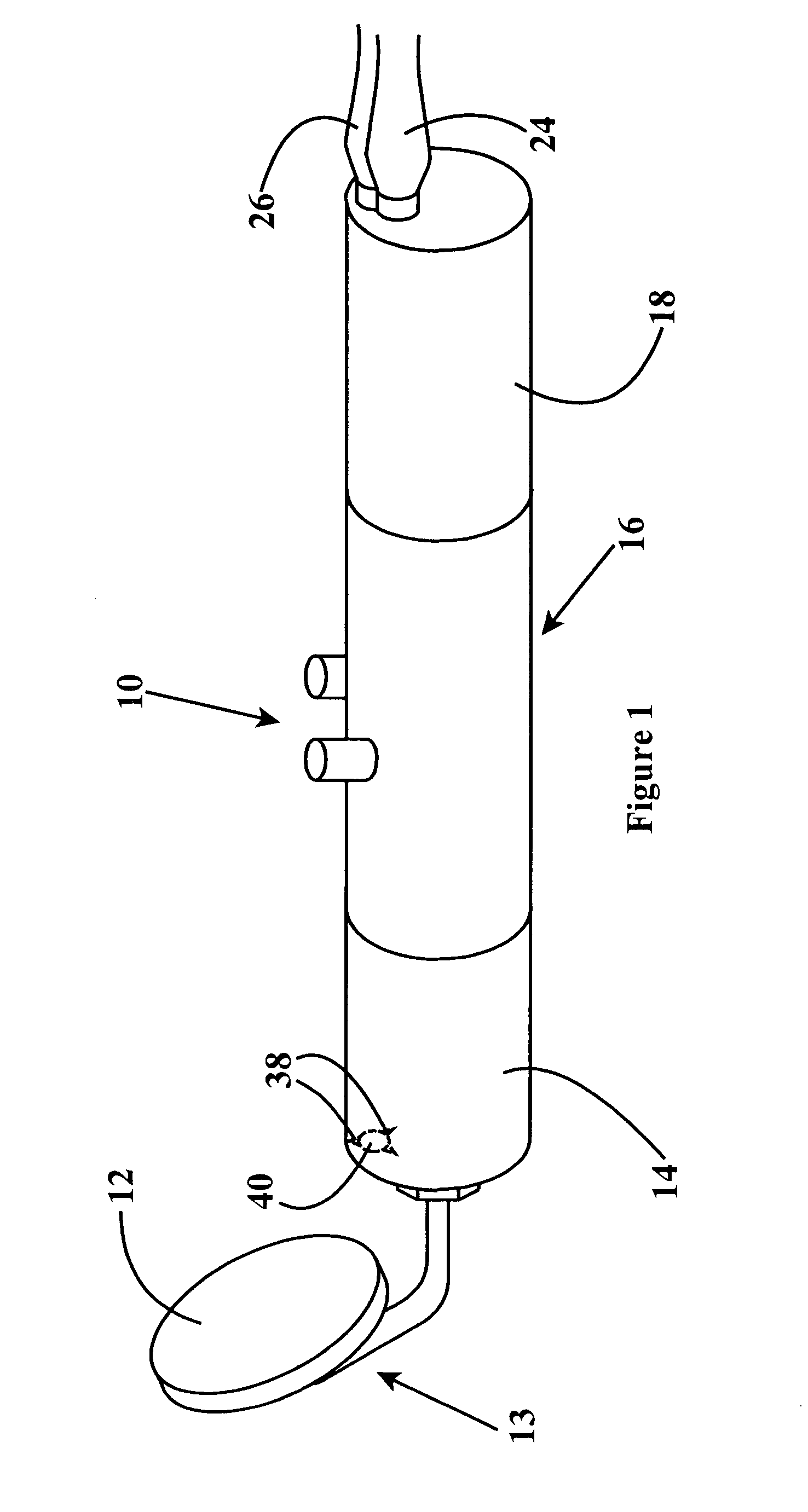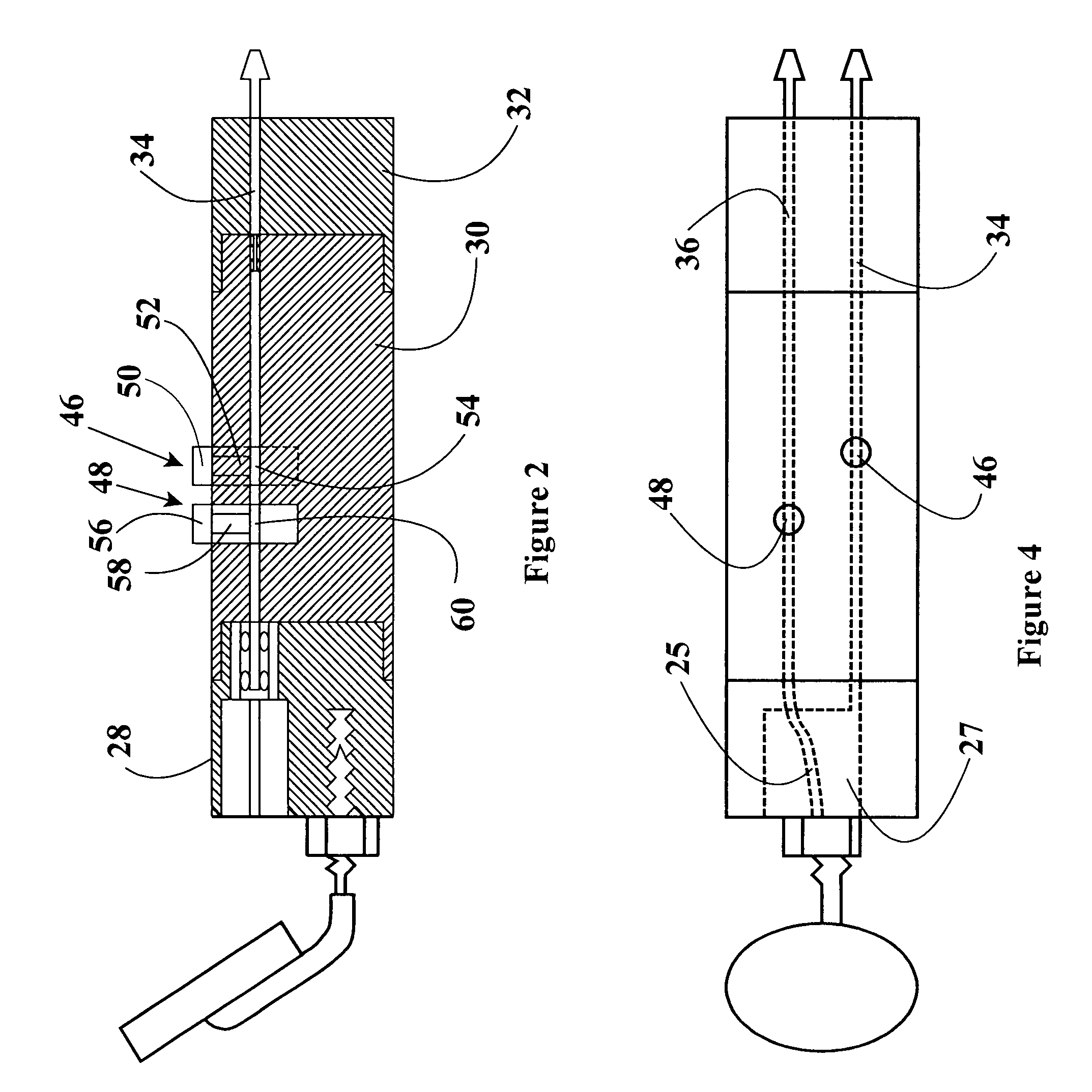A well known problem associated with the dental mirror is that the mirror frequently becomes covered with debris such that the dentist's view is obstructed.
In procedures in which a rotary drilling, sanding or
polishing device is used, the problem of debris accumulating on the mirror is particularly acute because, in addition to the fragments that break away from the patient's teeth and gums and land on the mirror,
water spray is also present during the use of a high speed
drill from water that is used to cool and lubricate the drilling site.
The accumulation of debris and water droplets from the cooling spray, as well as
saliva and the patient's breath
fogging the mirror, all present the well-known problem of obscured mirror vision for the dentist.
In addition, the repetitive wiping of the mirror is a source of aggravation and additional stress to the dentist.
Often, though, the
delay can be much greater, depending on the inexperience or lack of skill of the dentist or of the location of the procedure in the patient's mouth.
If he must get re-oriented every time he removes, wipes and re-inserts the mirror, the procedure becomes significantly longer.
The problem is so significant that many dentists, particularly those experienced and skilled enough to be able to “feel” the procedure even when their
visibility is impaired, will
resist the mirror withdrawal, wiping, re-
insertion and re-orientation, depending on the kind of procedure and the status of the procedure when the vision is obscured.
If, for instance, the
visibility in the mirror becomes obstructed near the end of a particular step in the procedure, the dentist often will complete the step with
impaired vision rather than take the time to remove the mirror to wipe it clean.
However, the '824 wiper blade itself partially obscures the dentist's vision, and it will still require withdrawal from the patient's mouth and wiping, or else being sprayed with a water
syringe operated by a dental assistant to completely expel the debris from the mirror.
Besides the
disadvantage of still requiring air or water to expel the accumulated debris and water after the use of the wiper, the use of the wiper blade requires a significant distance of travel for the dentist's
thumb on
thumb member 11 to perform a full wipe.
To utilize the '059 patented apparatus the dentist will have to disengage from the procedure, push the
thumb member up and back down to execute a wipe, and then re-engage the procedure, so the same basic problem will persist in that significant time will be added to procedures to clean the mirror.
In addition, the inclusion of the rotary device makes the end of the mirror large and cumbersome and difficult to handle, all problems when working in the small confines of the
human mouth with other
instrumentation.
The use of remote solenoid valves or other external valving by several of the devices will result in the addition of a large piece of costly equipment, and a self contained air source, that will eat up space in the
examination room.
However, the ability for an assistant to perform such function is difficult to perfect and still is imperfect because the dentist and dental assistant will have different views of the mirror and because the application of air and water must be coordinated with the work being done by the dentist without obstructing the operator's view.
In addition, the use of dental assistants to keep the mirror clean is labor intensive and costly.
None of the prior art devices address those problems.
The prior art devices came before the legal requirements were in place, so they obviously did not address them.
In fact, a frequent source of failures of existing mirrors is the
scratching or chipping of the reflective surface that occurs during autoclaving the mirror.
In addition to
cracking and chipping that occur during autoclaving, mirrors are frequently scratched, cracked or chipped when they come in contact with high speed rotary devices such as drills, which they are routinely right next to during a procedure.
Thus, in the common event of damage,
cracking or chipping of the mirror, with prior art self cleaning mirrors the entire device would have to be discarded.
While it is inexpensive and commonplace to replace simple mirrors, replacement cost becomes an issue when the mirror handle incorporates air and water orifices; the investment in such a device mandates that it not be so readily discarded.
Because none of the prior art devices contemplated replacement of the mirror, none of them considered or contemplated the need to have provisions ensuring the replacement mirror lined up with the air and water orifices, or with the operator pushbuttons.
 Login to View More
Login to View More  Login to View More
Login to View More 


